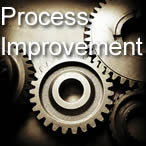What is team motivation?
Motivated team members enjoy coming into work and work hard, yet always have time for a laugh. Team motivation is a combination of workplace culture, organizational strategy and management style.
The benefits for employers are increased productivity, reduced absenteeism and turnover, and higher profits.
So why don’t all employers do it? Because they don’t know how to do it, don’t make time for it, or mistakenly think it gets in the way of real work.
It is essential to strike the right balance in motivating a workforce. In order to be effective, motivational strategies must be incorporated into a company’s business goals and its philosophy.
A motivated workforce is driven by strong leadership and a committed management.
Creating and sustaining motivation requires open communication, honesty and respect.
This approach includes developing a culture that encourages team members to participate in organizational activities and share in workplace success.
Essentially, motivation is about bonding with the people who report to you.
This includes making an effort to know them, listening to them and valuing them for their particular contributions and potential. If this is done, they are more likely to help you in meeting the challenges faced by your business.
Benefits of motivating your team
Much research has been undertaken to identify both the visible and invisible benefits of a highly motivated team.
• The findings show that teams who love their work and their workplace typically:
• look forward to coming to work
• actively and consciously contribute to the business
• get more done and have more ideas
• focus their energy on the positives rather than the negatives
• reinforce the organizational culture
• treat clients, co-workers and vendors with more respect
• weather the \”tough times\” with you
• serve as positive ambassadors for your business.
It is easy to see how these can benefit your business.
Apart from creating a harmonious day-to-day working environment, a highly motivated workforce can deliver financial gains through lower team turnover and recruitment costs, more satisfied clients and a more productive workforce.
This is why many large companies constantly monitor team morale. A happy company is a productive one – and more profitable!
How to motivate your team
While many businesses look to incentives or bonus plans to motivate their team, such plans only provide short-term superficial incentives, which fail to provide true motivation.
Research has repeatedly found that the prime team motivators are achievement, recognition, the work itself, responsibility, advancement, and growth.
In other words, although adequate salaries, incentive pay and bonus plans can avoid dissatisfaction, they do not lead to either job satisfaction or high motivation.
The best way to motivate your team is to recognize that people are motivated by their own individual goals, values and desires.
Get to know people and understand their needs, then give them project assignments in which they can become motivated by satisfying their needs.
People are motivated more by feelings and sensitivities than they are by facts and logic. It is common for people to quit high-paying jobs because they don\’t feel appreciated, don\’t feel challenged, or don\’t like the work environment.
Tips for motivating team members
There is no single set of activities that act as a magic formula for creating a highly motivated team.
However certain concepts and practices have proven to be winning combinations if used properly and sincerely. The seven best tips to improving team motivation are:
1. Give your team something to cheer about
Create and communicate an honest vision and mission for your business. Studies show that most people want to believe that there is some purpose and meaning to their work. If your team understand the purpose and direction of your business, and their role in making the desired outcomes happen, they might gain the sense of purpose and contribution that they seek.
2. Encourage team members to grow
Training, professional development, opportunities to try new skills or apply old skills in new ways and cross-training are mutually beneficial business tools. The organization deepens its \”bank of knowledge and know-how\” and the morale among the team soars.
3. Hear their voices
Welcome and provide venues for team feedback and participation and take appropriate action to consider and respond to their comments. When people don’t feel heard, or they have the perception that their ideas aren’t valued or at least acknowledged, morale will suffer.
4. Be consistent
Consistency breeds trust. Policies, roles, expectations, inspired leadership and effective communication are many of the areas that require consistency in order to achieve a high level of team motivation in your business.
5. Communicate
Keep team members informed and build their understanding of what is happening in the business, and why.
6. Reward and recognize
Arguably one of the most powerful ways to increase team motivation is to recognize and reward actions and behaviours that are outstanding or in line with the vision and mission of your business.
7. Remember, it’s not all work
Because the majority of your team will spend most of their waking time each day at work it is important to recognize the social aspect of employment. Morning teas, lunches, and celebrating birthdays can be fitted into the regular routines. Out-of-hours social activities are another way in which you can create a stronger sense of teamwork and a more motivated team. And don’t forget to celebrate your successes! At some level every team member performing a job enables the organization to achieve its wins. It is important to celebrate those moments as a group.





